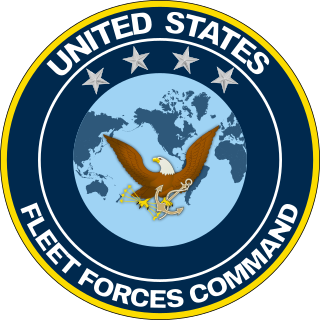
The United States Fleet Forces Command (USFF) is a service component command of the United States Navy that provides naval forces to a wide variety of U.S. forces. The naval resources may be allocated to Combatant Commanders such as United States Northern Command (USNORTHCOM) under the authority of the Secretary of Defense. Originally formed as United States Atlantic Fleet (USLANTFLT) in 1906, it has been an integral part of the defense of the United States of America since the early 20th century. In 2002, the Fleet comprised over 118,000 Navy and Marine Corps personnel serving on 186 ships and in 1,300 aircraft, with an area of responsibility ranging over most of the Atlantic Ocean from the North Pole to the South Pole, the Caribbean Sea, Gulf of Mexico, and the waters of the Pacific Ocean along the coasts of Central and South America.
A naval flight officer (NFO) is a commissioned officer in the United States Navy or United States Marine Corps who specializes in airborne weapons and sensor systems. NFOs are not pilots (naval aviators), but they may perform many "co-pilot" or "mission specialist" functions, depending on the type of aircraft. Until 1966, their duties were performed by both commissioned officer and senior enlisted naval aviation observers (NAO).

Timothy John Keating is a retired United States Navy admiral. During his career, he served as commander of Carrier Group Five, the United States 5th Fleet, the United States Northern Command and North American Aerospace Defense Command (NORAD), and United States Pacific Command. He retired in 2009 after more than 38 years of service. He was the first navy officer to head Northern Command and NORAD.
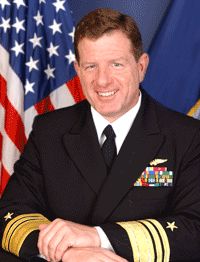
Vice Admiral David Charles Nichols Jr. is a retired senior U.S. Navy officer and Naval Flight Officer. At the time of his retirement in September 2007, he was the Deputy Commander of United States Central Command (USCENTCOM) at MacDill AFB, Florida.
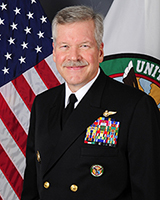
Mark Irby "MRT" Fox is a retired United States Navy vice admiral who served as the Deputy Commander of United States Central Command (CENTCOM). Prior to assuming his duties at CENTCOM, he served as Deputy Chief of Naval Operations for Operations, Plans, and Strategy (N3/N5), Commander, United States Naval Forces Central Command and Commander, United States Fifth Fleet. He also previously served as the Commander of the Naval Strike and Air Warfare Center at Naval Air Station Fallon, Nevada, and as Communications Division Chief, American Embassy Annex, Baghdad, Iraq.

Vice Admiral Diego E. Hernandez was a United States Navy officer who was the first Hispanic American to be named Vice Commander, North American Aerospace Defense Command (NORAD).
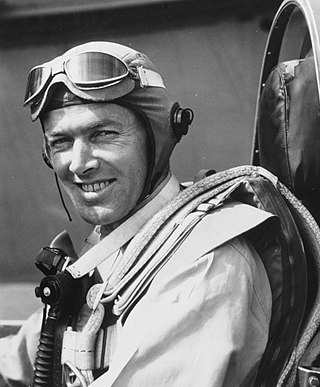
Vice Admiral James Henry Flatley Jr. was a World War II naval aviator and tactician for the United States Navy (USN). He became a fighter ace credited with shooting down six enemy aircraft in aerial combat.
Hispanic and Latino Admirals in the United States Navy can trace their tradition of naval military service to the Latino sailors, who have served in the Navy in every war and conflict since the American Revolution. Prior to the Civil War, the highest rank reached by a Latino-American in the Navy was commodore. Such was the case of Commodore Uriah Phillips Levy (1792–1862), a Sephardic Jew of Latin American descent and great grandson of Dr. Samuel Nunez, who served in the War of v. During the American Civil War, the government of the United States recognized that the rapid expanding Navy was in need of admirals therefore, Congress proceeded to authorize the appointment of nine officers the rank of rear admiral. On July 16, 1862, Flag Officer David Glasgow Farragut became the first Hispanic-American to be appointed to the rank of rear admiral. Two years later (1864), Farragut became a vice admiral, and in 1866 the Navy's first full admiral. During World War I, Robert Lopez, the first Hispanic graduate of the United States Naval Academy, served with the rank of commodore in command of the Mare Island Naval Shipyard, and during World War II five Hispanics served with the ranks of rear admiral or above in either the European or Pacific Theaters of the war. As of April 2007, twenty-two Hispanic-Americans have reached the rank of admiral, and of this number thirteen were graduates of the USNA.
Hispanics in the United States Naval Academy account for the largest minority group in the institution. According to the academy, the Class of 2009 includes 271 (22.2%) minority midshipmen. Out of these 271 midshipmen, 115 are of Hispanic heritage. In 2004, of the total of 736 female midshipmen, 74 (10%) of them were of Hispanic descent.
Hispanics in the United States Navy can trace their tradition of naval military service to men such as Lieutenant Jordi Farragut Mesquida, who served in the American Revolution. Hispanics, such as Seaman Philip Bazaar and Seaman John Ortega, have distinguished themselves in combat and have been awarded the Medal of Honor, the highest military decoration of the United States. Hispanics have also reached the top ranks of the navy, serving their country in sensitive leadership positions on domestic and foreign shores. Among those who have reached the highest ranks in the navy are Commodore Uriah Phillips Levy, of Sephardic and Ashkenazic Jewish descent, who participated in the War of 1812 as an assistant Sailing master; Admiral David Glasgow Farragut, for whom the rank of admiral in the U.S. Navy was created during the American Civil War; and Admiral Horacio Rivero, who led the navy during the Cuban Missile Crisis.

Thomas McClelland is a decorated U.S. Navy veteran who served in the Vietnam War and Operation Desert Storm.

William Evans "Bill" Gortney is a retired United States Navy admiral who served as the sixth commander of United States Northern Command and the 23rd commander of North American Aerospace Defense Command (NORAD). He previously served as the Commander, United States Fleet Forces Command from September 14, 2012 to December 2014 and Director of the Joint Staff from July 1, 2010 to August 2012. Prior to that, he served as Commander, U.S. Naval Forces Central Command/5th Fleet. He assumed his post as CDRUSNORTHCOM and commander of NORAD on December 5, 2014, and was succeeded by General Lori Robinson on May 13, 2016.

Nora Wingfield Tyson is a retired United States Navy vice admiral. In 2015, she was installed as commander of the Third Fleet, making her the first woman to lead a United States Navy ship fleet. She retired from service in 2017. Tyson previously served as the commander of Carrier Strike Group Two, from July 29, 2010 to January 12, 2012; she was the first female commander of a United States Navy Carrier Strike Group. She then served as Vice Director of the Joint Staff beginning in February 2012. In July 2013 she was promoted to vice admiral and named as Deputy Commander, United States Fleet Forces Command.

Robin Rumble Braun is a retired vice admiral of the United States Navy. Her last assignment was as Chief of Navy Reserve and Commander, Navy Reserve Force. She assumed that assignment on 13 August 2012. She was the first female commander of the United States Navy Reserve, and the first woman to lead any Reserve component of the United States military. Prior to her last assignment, Braun served as Deputy Director, European Plans and Operations Center, ECJ-3 United States European Command.

In the United States Navy, United States Coast Guard, United States Public Health Service Commissioned Corps (USPHS), and National Oceanic and Atmospheric Administration Commissioned Officer Corps, captain is the senior-most commissioned officer rank below that of flag officer. The equivalent rank is colonel in the United States Army, Air Force, Space Force, and Marine Corps.

Scott Harbison Swift is a retired admiral in the United States Navy, serving as the commander of the U.S. Pacific Fleet from May 27, 2015 to May 17, 2018. He previously served as the director of Navy Staff in the office of the Chief of Naval Operations.

Jeffrey William Hughes is a United States Navy vice admiral who serves as the Deputy Chief of Naval Operations for Warfighting Development of the United States Navy since February 1, 2021.

Scott Andrew Stearney was an American naval aviator and vice admiral of the United States Navy who served as commander of the Fifth Fleet based in Bahrain.

Samuel John Paparo Jr. is a United States Navy four-star admiral serving as the 64th commander of the United States Pacific Fleet, succeeding Admiral John C. Aquilino on May 5, 2021.
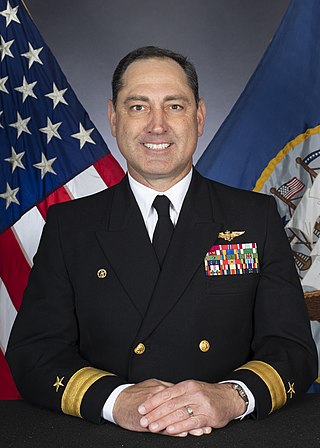
Daniel P. Martin is a United States Navy rear admiral and naval aviator who serves as the director of maritime operations of the United States Pacific Fleet. He most recently served as the commander of Carrier Strike Group 1 from May 28, 2021 to May 3, 2022. He previously served as senior military assistant to the Assistant Secretary of State for Political-Military Affairs. In earlier command tours, he commanded Carrier Air Wing 8 from June 2015 to 2016 and Strike Fighter Squadron 37 from 2010 to 2011.



















